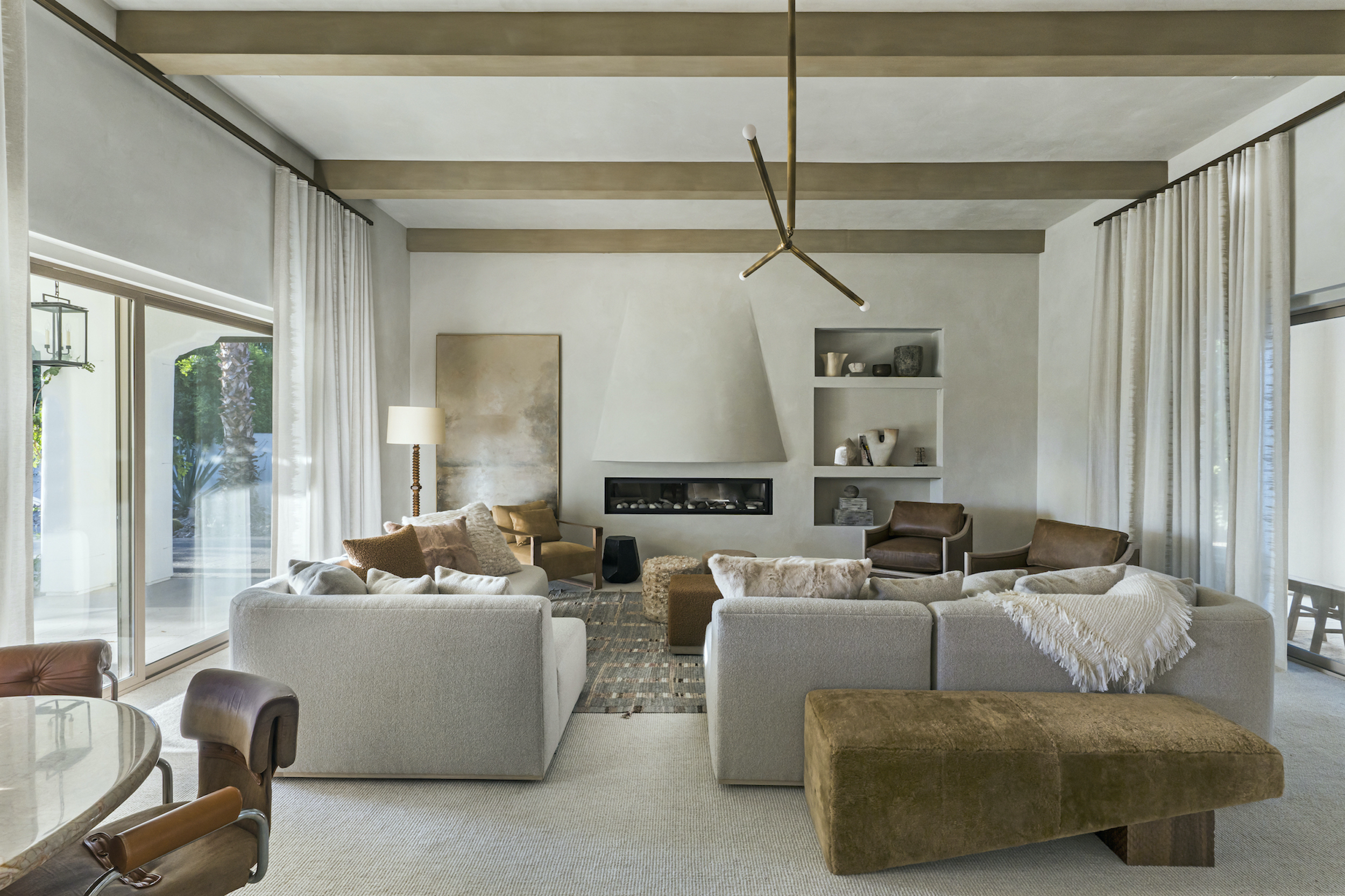
When working out where to put our furniture, there are usually some architectural features in the room that dictate the layout for us, such as a large window, doorways, or a fireplace. Thanks to these elements, we generally have an intuitive sense of where to position our larger items of furniture.
It's also a good idea to locate the 'command position' and note the coziest corner for curling up in. Furniture layout really depends on the shape and size of your room, however, we would argue that some furniture placement rules for living rooms apply to any space.
It's always worth rethinking things now and then, as some furniture rearranging can breathe new life into a living room and make a small living room layout feel more intimate and stylish, as well as improving the sense of flow.
We asked interior designers for the furniture placement rules they always follow — adhere to these, and you can't go far wrong.
1. Make it conversational
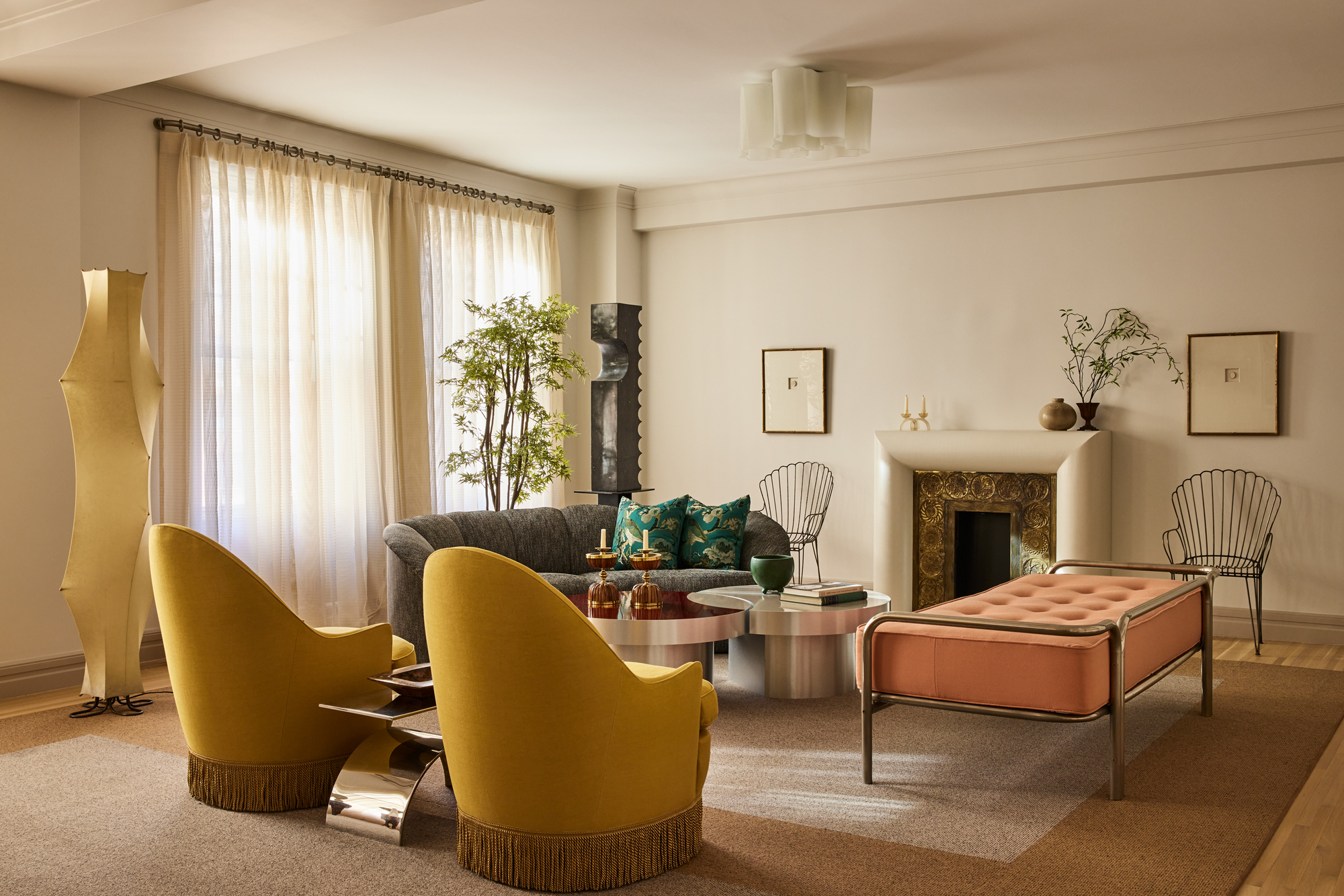
We all want a living room that's conducive to good conversation, and that usually means having items of furniture facing each other, or at least at right angles. In reality, our furniture often ends up pointing towards the TV, and this can create a less sociable and inviting atmosphere.
'I always suggest people position their furniture based on a conversational flow instead of around the TV,' says interior designer Breegan Jane. 'I know it’s tempting to center things around where the TV will be, but I’m much more interested in seeing a space that has been thoughtfully designed so that the people spending time there can talk to and interact with one another in an organic and intuitive way.'
So, you might like to consider chairs that swivel and allow you to adapt the layout of your space, whether you're enjoying post-dinner party conversation or a movie night. For example, this linen chair, at Target has a discreet swivel base. There are also plenty of great ways to hide a TV or at least make it less prominent.
2. Don't be afraid to 'float'
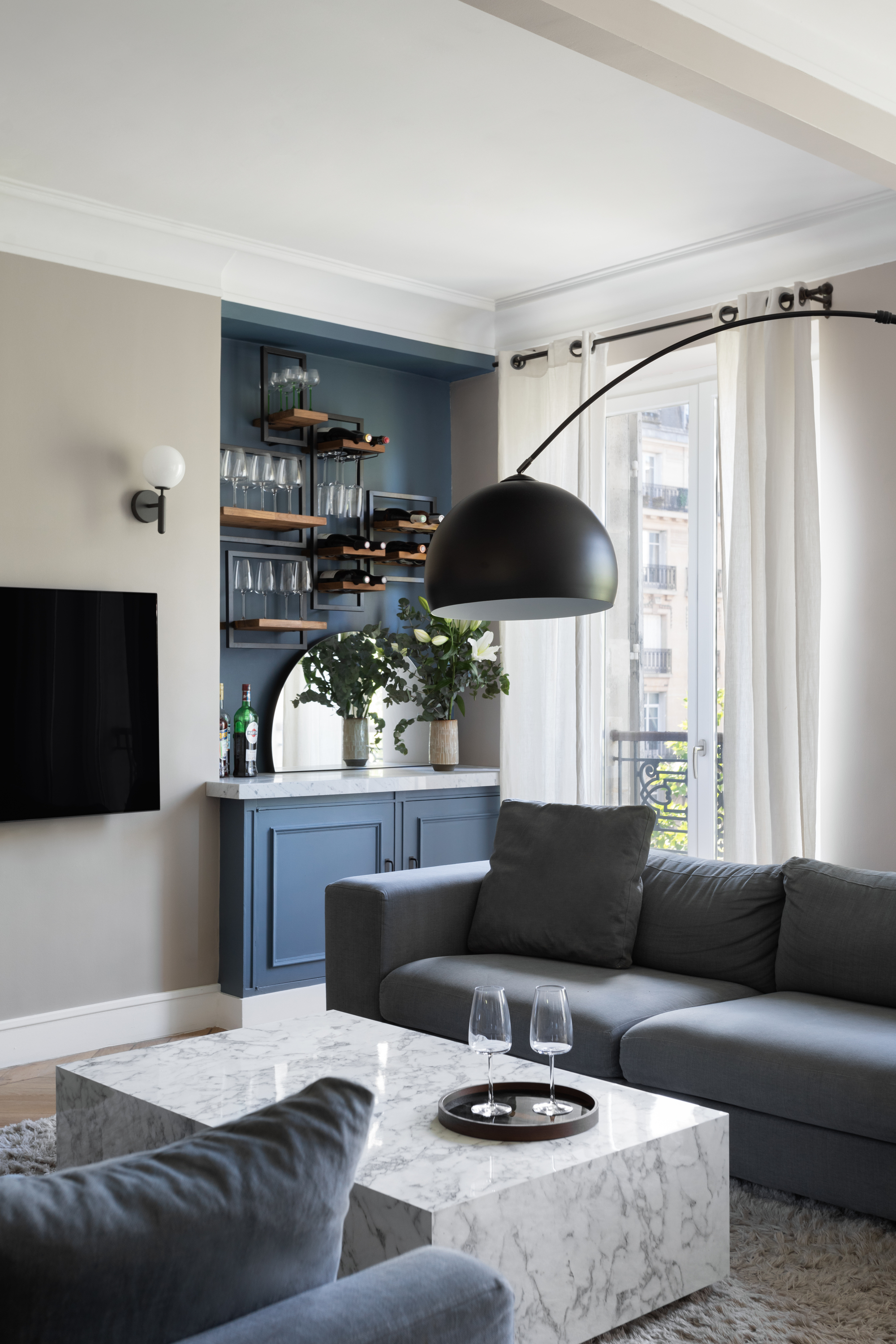
If you want a cozier space, try 'floating' living room furniture by simply bringing it away from the walls. We tend to place our couches flush against the walls, and while there is nothing wrong with that, it's worth experimenting with alternative furniture layouts. In larger spaces, having all the furniture against the walls can leave you with a room that looks a little agoraphobic and disjointed, rather than cozy and cohesive.
'One key rule is to avoid pushing all the furniture against the walls,' echoes interior designer Arthur Miller from Martinuzzi Interiors. 'Instead, consider pulling the furniture away from the walls to create a more intimate and balanced arrangement. This can help the room feel more cohesive and encourage conversation, making the space more inviting and comfortable.
'By creating a more centralized seating area, you can also make the room feel more connected and visually appealing.'
3. Consider your focal point

Every living room needs a focal point — be it a piece of artwork, bookshelves, or a statement light fixture — and clever furniture placement can show your focal point in its best light. 'Be mindful of the room's focal point, such as a fireplace or a prominent window,' begins interior designer Nina Lichtenstein. 'Orient the furniture arrangement to highlight and complement this focal feature.'
Clear focal points make a striking first impression as you enter the space and give the eye somewhere to land. So as well as accentuating it with your furniture placement, ensure the focal point isn't obstructed by any clutter.
4. Anchor with a large rug
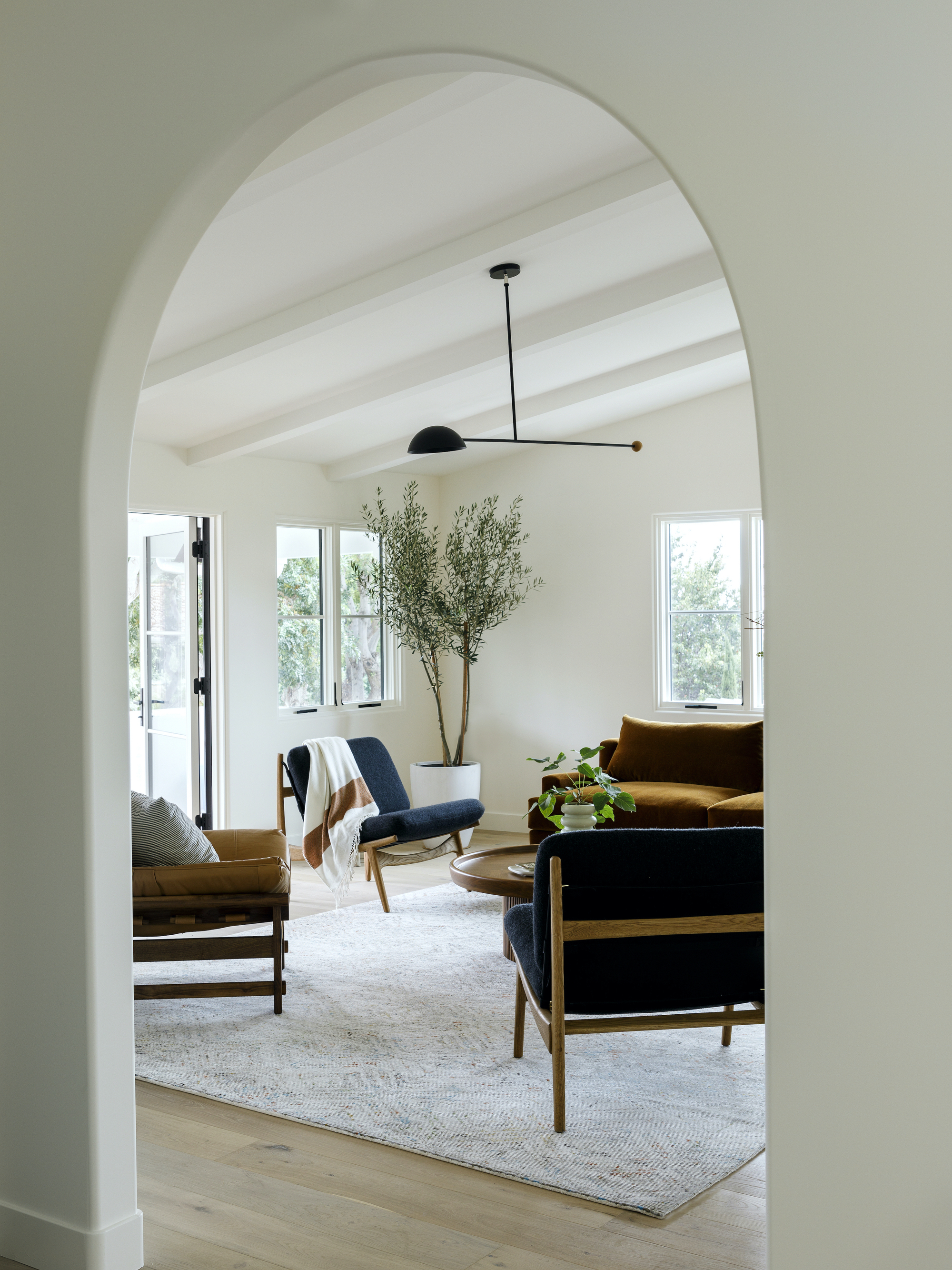
The best rugs can totally transform a space, bringing texture and warmth. They also create a clear zone for lounging, and if you choose a rug with pattern and color, you can use it as a jumping-off point for your living room color scheme.
Interior designer Leah Harmatz advises going large with your rugs: 'I generally find that rules are made to be broken, and the design is very specific to the individual layout of each home,' begins Leah. 'But one constant is that I'll always opt for a larger-sized rug. The front legs of every piece of furniture should be anchored on the rug, if not the entire piece.'
A rug that is too small is one of the common mistakes that make a living room look smaller, so consider sizing up to enhance the sense of space.
Price: $399
This jute wool rug adds a layer of warmth and texture — jute is hardwearing, ideal for living rooms, while wool adds some cushioning.
Price: $459
This statement rug was handcrafted in Brazil, from soft premium hides. It's a conversational piece that brings texture and pattern, plus the three tones will prevent stains and spills from showing.
Price: $173.99
A Persian-inspired design offers all of this intricacy and elegance of hand-made classics but with a more affordable price tag. A centerpiece for a living space, it will be sure to make an impression.
5. Ensure a table is always within reach
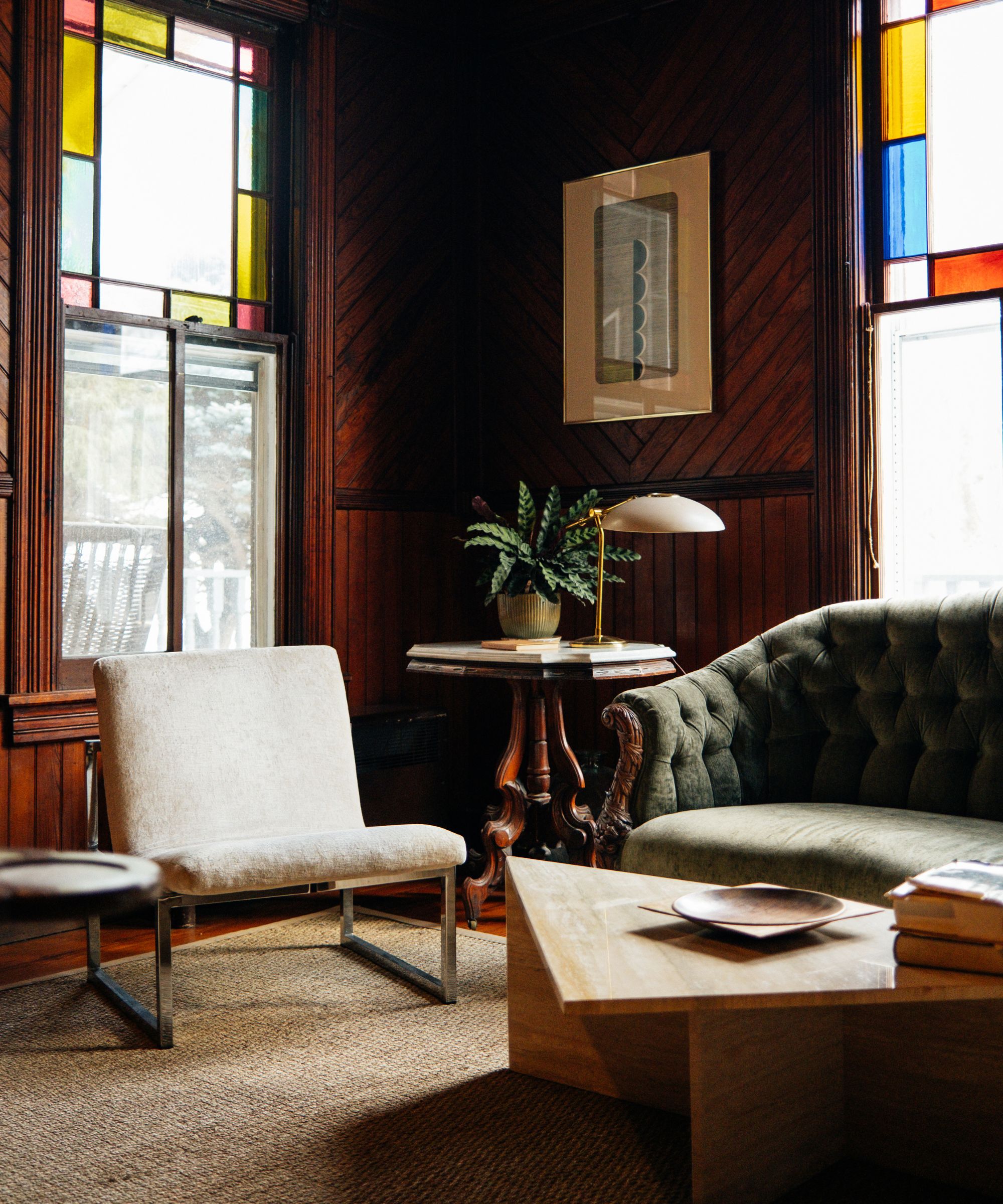
As Breegan Jane touches on above, interior designer Kathy Kuo says that one of the keys to a successful living room is making sure you can gather and connect comfortably, which means giving every seat a spot for putting down a drink. When arranging living room seating, keep a side table, coffee table or shelf within arm's reach so you're never left with nowhere to set down your coffee.
'I never like to commit to hard and fast rules,' Kathy begins, 'but in any living room, you'll want ample seating that all is close enough together so that conversation can flow and that every seat can reach a table of some kind to set their beverage on,' says Kathy.
'I would also embrace negative space — it's okay to let a living room breathe a little bit so that there's room to maneuver easily.'
Where is the best place to put a couch in the living room?
As a rule, it's best to face your couch towards another focal point in the room, which may be the fireplace or a large window. Often in small living rooms, there is only one place it can feasibly go without negatively impacting on flow of the space. For example, it's best to avoid placing it with its back or side facing the door as this can feel jarring on entry, although a console table and lamps behind a couch can soften the look.







